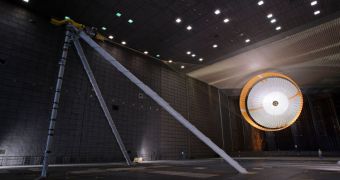Between June 12-14, a number of scientists, engineers and researchers converged on Houston, Texas, to take part in a workshop organized by the Lunar and Planetary Institute (LPI) for the American space agency. The topic was forging a new strategy to guide the exploration of Mars.
As technologies advance, the prospect of landing humans on the Red Planet is moving from science fiction to science fact. Under US President Barack Obama's 2010 National Space Policy, NASA was directed to land astronauts there by the early 2030s.
By organizing this workshop, NASA wanted to learn about new, cutting-edge science in this field, assess technologies that have only recently been made available for use, and discuss a number of innovative mission concepts. A report detailing the discussions is available online.
At this point, the space agency has a Mars Exploration Program (MEP), but this was developed quite a while back, so its science goals no longer reflect the priorities identified in more recent times. In addition, it does little to address the challenges currently associated with exploring Mars.
In addition to exposing the agency to a host of new ideas, the workshop and resulting report will also be taken into account by the NASA Mars Program Planning Group (MPPG). The latter also needs to consider budgetary, programmatic, scientific and technical constraints.
“Scientists and engineers came together to present their most creative ideas for exploring Mars. Great ideas come from challenging the best and brightest and igniting their passion and determination to succeed,” John Grunsfeld explains.
He is an astronaut, astrophysicist and associate administrator with the NASA Science Mission Directorate (SMD), at the agency's Headquarters, in Washington, DC. The first draft of the MPPG report is expected to be forwarded to NASA for review by the end of this summer.
“The LPI workshop provided a broad set of ideas for Mars exploration, including synergies between science, human exploration and technology development. The number of workshop participants demonstrates the broad interest in Mars exploration,” says William Gerstenmaier.
He is the associate administrator of the Human Exploration and Operations Mission Directorate, also at NASA Headquarters. Gerstenmaier, Grunsfeld, NASA Chief Scientist Waleed Abdalati and NASA Chief Technologist Mason Peck lead the efforts to reformulate the MEP.

 14 DAY TRIAL //
14 DAY TRIAL //